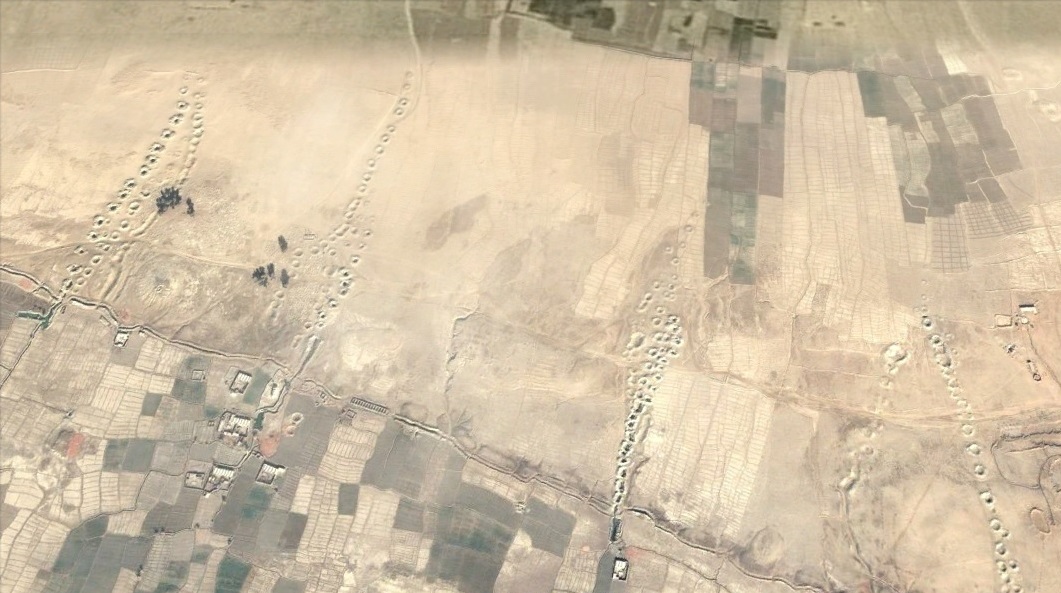Author: Hanieh Fatouraee
Region: South of Helmand Province, Afghanistan
Image: Image depicting indigenous water extraction system called karez or qanat and the organic formation of Afghan villages in relation to the wells. Satellite image via Google Maps.
This project focuses on the complex networks of the obfuscated neocolonial project of the Kajaki dam upon the Helmand River in Afghanistan. It is investigated from the perspective of environmental violence through the acts of central governmentality that are imposed upon the land with hydrological infrastructural weaponization practices in Afghanistan as a borderland frontier. The Helmand province is one of the main regions involved in illicit poppy cultivation, has been a major stronghold of insurgents and a strategic region during conflicts. Located in this province is the Kajaki dam which was built part of the Helmand and Arghandab Valley Authority project (HAVA) during the cold war in 1952. This research is an investigation and analysis on the environmental transformations tied to the history of hydrological weaponization and military invasion around the fragile ecologies of the Helmand. It elaborates upon the Kajaki dam infrastructure as a weapon while focusing on justified violence of counterinsurgency tactics ranging from poppy eradication operations to military-based development through multiplicities of violence they propagate. Utilizing satellite imagery of the river and native karez, historical evidence and technical reports, Hydraulic Architectures explores how the shift from indigenous epistemologies of hydrology to the Western (neo)colonial modes of progress and development together with forceful border-making and military invasion, has spatially redefined the area and reconfigured it around the exploitation of rivers and underground water.
